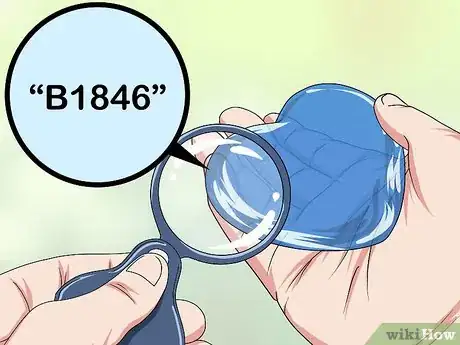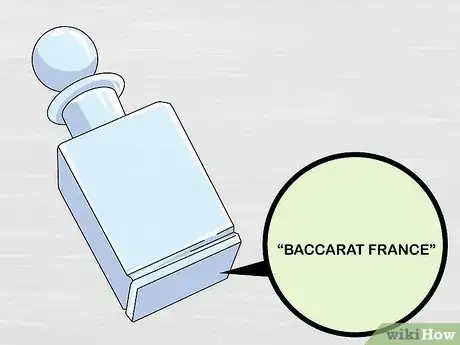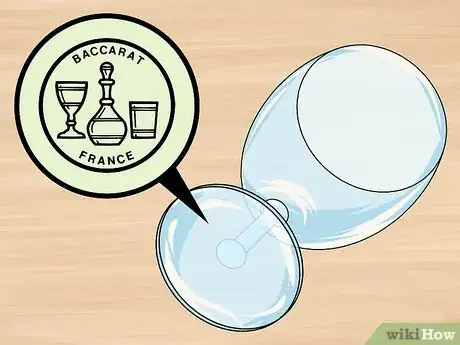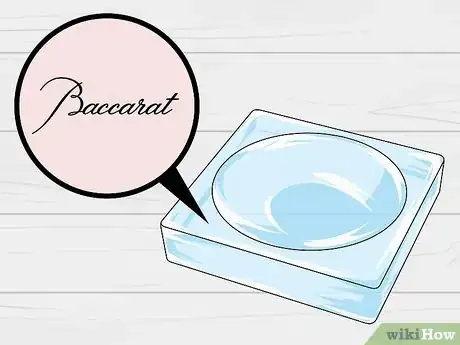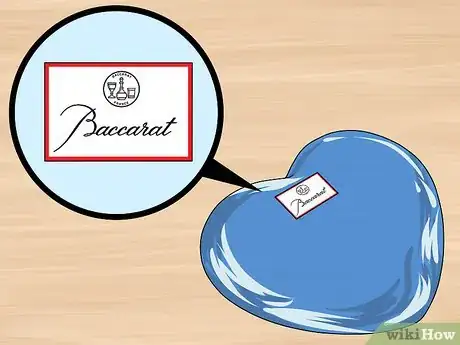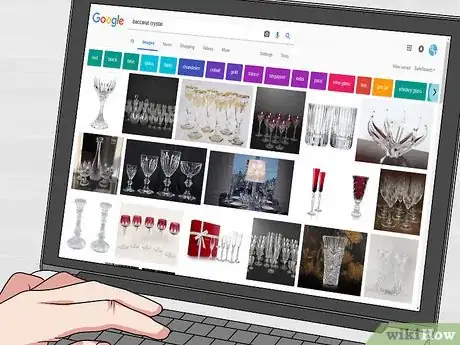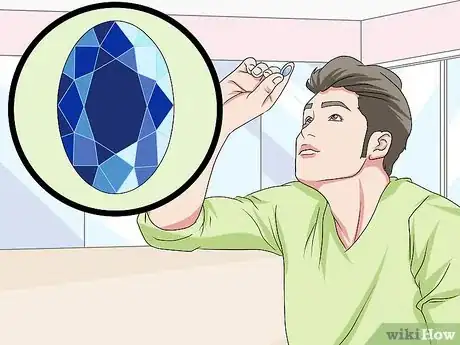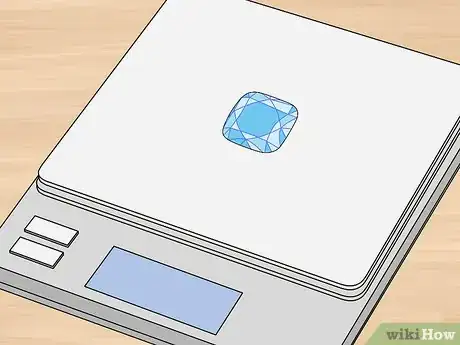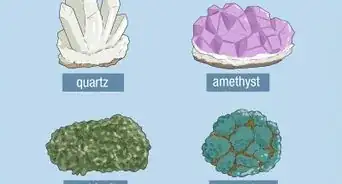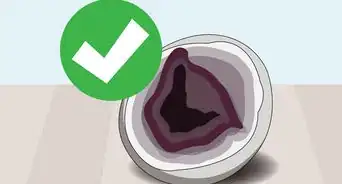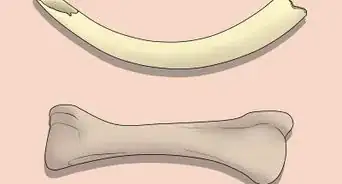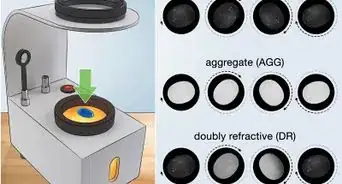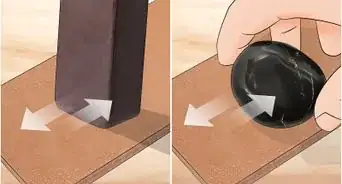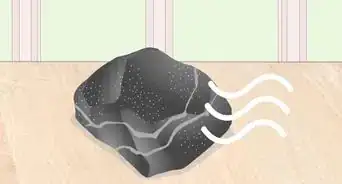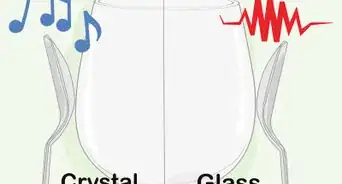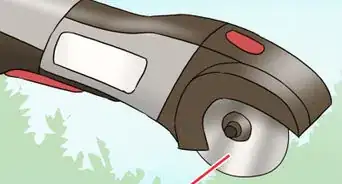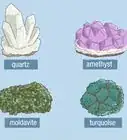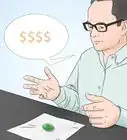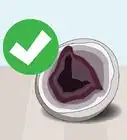This article was co-authored by wikiHow staff writer, Amy Bobinger. Amy Bobinger has been a writer and editor at wikiHow since 2017. She especially enjoys writing articles that help people overcome interpersonal hurdles but frequently covers a variety of subjects, including health and wellness, spirituality, gardening, and more. Amy graduated with a B.A. in English Lit from Mississippi College in 2011 and now lives in her hometown with her husband and two young sons.
There are 8 references cited in this article, which can be found at the bottom of the page.
This article has been viewed 77,409 times.
Learn more...
Finding a piece of Baccarat crystal is a rare treasure, but it’s important to verify that it’s authentic before you spend a lot of money on an item. Baccarat is a French company which has been producing high-quality lead crystal since 1816. If you study Baccarat’s marks and the various styles of crystal they produced, you’ll be able to identify the real thing when you see it!
Steps
Finding Baccarat’s Markings
-
1Look for the letter B followed by a year on older Baccarat paperweights. From about 1846-1849, Baccarat’s famous paperweights were marked with the letter B and the year. The marking might be on the bottom of the paperweight or on one of the colorful glass canes that are used as decoration inside of the paperweights. [1]
- Paperweights made in 1846 have the mark B1846. The B, 8, and 6 are red, and the 1 and 4 are blue.[2]
- Paperweights from 1847 are marked with B1847. The B, 8, and 7 are blue, the 1 is green, and the 4 is red.[3]
- A Baccarat paperweight made in 1848 will be marked B1848, with a blue B, green 1 and 4, and red 8 and 9.[4]
- In 1849, paperweights were marked only with the year, without the letter B. The 1 and 4 will be green and the 8 and 9 are red.[5]
-
2Check for an etched logo on perfume bottles from 1920 to the present. This logo was usually etched onto the base of the crystal. The first logo featured a wine glass, a carafe, and a goblet, with “BACCARAT FRANCE” printed in capital letters within a circle.[6]
- Baccarat crystal has been used for some of the world's finest perfumes, including Houbigant, Guerlain, D'Orsay, Ybry, Christian Dior, and Maison Francis Kurkdjian.[7]
Advertisement -
3Look for the logo on other glass pieces starting from 1936. Baccarat has made a wide variety of crystal objects, including vases, stemware, chandeliers, decanters, candy dishes, and more. Check the bottom or base of the piece for the logo featuring the wine glass, carafe, and goblet.[8]
- Later pieces may only feature the words "BACCARAT FRANCE" without the images.
-
4Check for laser etchings on contemporary crystal pieces. Modern pieces are etched with the word “Baccarat” and do not feature the whole logo. They may also be etched with a large letter B.[9]
- Today's Baccarat crystal includes the classics such as stemware and paperweights, as well as modern pieces like ashtrays, crystal clocks, and jewelry.[10]
-
5Examine the bottom of the piece for a sticker. Certain Baccarat crystal is marked with a sticker. This is often a rectangular or quadrilateral sticker featuring the Baccarat logo.[11]
- Rectangular stickers usually have a red border and a white background, with the circular Baccarat logo appearing above the name. They are sometimes solid red with gold writing.
- Quadrilateral stickers are gold with a black border and the Baccarat name in the center of the sticker. There is no circular logo.
Identifying Unmarked Pieces
-
1Study collectors' websites and catalogs to identify Baccarat styles. Baccarat strives to be at the cutting edge of style, so you can often date pieces based on the design. Read old catalogs and look at pictures of Baccarat crystal online to familiarize yourself with the work.[12]
-
2Use line drawings in old catalogs to identify antique pieces. Due to subtle differences in manufacturing and the intricate nature of crystal, it can be hard to compare your piece to a photograph of a similar style. Line drawings, like those used in early catalogs, can help you determine the date of your piece with more accuracy.[15]
-
3Study the styles of the designers who worked for Baccarat. Baccarat has employed different crystal designers through the years, each of whom brings their unique style to Baccarat crystal. By familiarizing yourself with these designers and their art, you will be able to identify their work when you see it.
- For instance, if you are familiar with the Ballon pattern from 1916, which features trellis-like embellishments, you may be able to identify a piece as Baccarat even if there are no Baccarat markings.
-
4Check the weight of a piece. Reproduction Baccarat are common, but due to the replication process, original Baccarat crystal will be significantly heavier than an imitation.
-
5Bring your item to a Baccarat store or contact an expert online. If you're still not sure about the origin of your piece, contact a Baccarat representative or visit a Baccarat dealer near you.
- To find the closest Baccarat dealer, visit http://store.baccarat.com/.
- You could also look online to find antique dealers who specialize in glass art and Baccarat crystal.
References
- ↑ https://www.worthpoint.com/articles/blog-entry/all-marks-indentiying-baccarat-crystal-glass
- ↑ http://www.hobbizine.com/page1061.html
- ↑ http://www.hobbizine.com/page1061.html
- ↑ http://www.hobbizine.com/page1061.html
- ↑ http://www.hobbizine.com/page1061.html
- ↑ https://www.worthpoint.com/articles/blog-entry/all-marks-indentiying-baccarat-crystal-glass
- ↑ http://www.dailymail.co.uk/home/you/article-1315949/A-spritz-time-The-perfume-pedigree-nose.html
- ↑ https://www.collectorsweekly.com/art-glass/baccarat
- ↑ https://www.crystalclassics.com/baccarat/catalog2017.htm
- ↑ https://us.baccarat.com/en/beautiful-gifts-in-a-red-box/mini-medicis/
- ↑ https://www.collectorsweekly.com/art-glass/baccarat
- ↑ https://ourpastimes.com/date-baccarat-crystal-glass-8325257.html
- ↑ https://ourpastimes.com/date-baccarat-crystal-glass-8325257.html
- ↑ https://ourpastimes.com/date-baccarat-crystal-glass-8325257.html
- ↑ http://www.lamidesarts.fr/epages/167248.sf/en_US/?ObjectPath=/Shops/167248/Products/102004
About This Article
To identify Baccarat crystal, look for a marking on the base of the piece. Baccarat paperweights from 1846-1849 will be marked with the letter B and the year the piece was crafted. Starting in about 1920, perfume bottles were etched with a Baccarat logo featuring a decanter, a goblet, and a wine glass, with the words “BACCARAT FRANCE” circling the logo. This logo was used on other crystal pieces starting in 1936. Modern pieces are often laser etched with the word “Baccarat.” For tips on identifying unmarked Baccarat pieces, read on!
